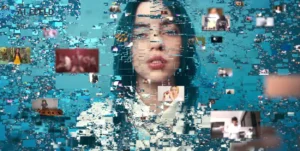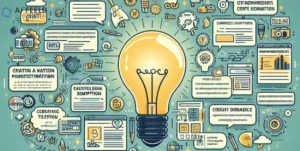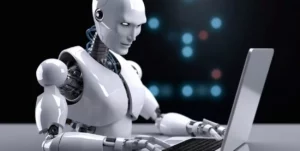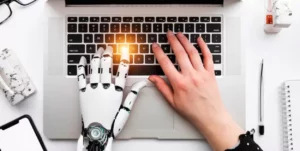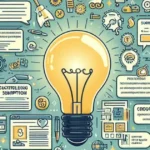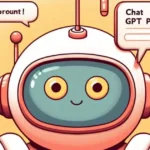AI replacing UX designers refers to the potential scenario where artificial intelligence systems take over the tasks traditionally performed by human designers in the field of user experience. This involves using advanced algorithms and machine learning to automate design processes and improve user interactions with technology.
Imagine a world where machines, like AI, might do the designing work we usually see humans do for websites and apps. The big question is: Will AI replace UX designers? It’s like a mystery waiting to unfold, exploring if technology can match the skills and creativity of human designers in making things easy and cool for everyone.
Before we delve into the potential future scenarios, let’s explore the current landscape. The rise of AI in UX design is marked by its ability to automate repetitive tasks and streamline certain aspects of the design process. From generating design prototypes to analyzing user data, AI is proving to be a valuable asset for designers.
Impact on Traditional UX Roles
As technology evolves, there’s talk about AI possibly taking over some tasks of UX designers. This could change traditional roles in the UX field. While AI might handle routine tasks, human designers may boldly integrate AI For UX Design by focusing more on creativity and understanding user emotions. The impact remains uncertain, but it sparks discussions about how collaboration between humans and AI for UX design could shape the future of designing user experiences.
Automation vs. Creativity
The balance between automation and creativity is at the heart of the AI UX design integration. While AI can handle routine tasks efficiently, the creative spark that designers bring to projects remains irreplaceable. It’s a symbiotic relationship where AI supports and enhances human creativity.
AI Tools for UX Designers
AI tools designed for UX professionals are already making waves. These tools assist in tasks such as user research, prototyping, and testing. For instance, tools like Adobe’s Sensei and Sketch2React use AI algorithms to streamline design processes, saving time and resources.
Skill Evolution in UX Design
The advent of AI in UX design necessitates a shift in the skill set required for designers. Beyond traditional design skills, UX professionals now need to be adept at working alongside AI tools, understanding algorithms, and interpreting data insights. Adaptability is the key to thriving in this evolving landscape.
Challenges and Concerns
As technology advances, there are concerns about AI taking over the role of UX designers. One challenge is ensuring that AI systems understand human emotions and preferences to create truly user friendly experiences. Another concern is the potential loss of the unique creativity and empathy that human designers bring to the table.
| Challenge | Description |
| Lack of Human Touch | Concerns about AI’s ability to understand and empathize with human emotions. |
| Creativity Gap | The challenge of replicating the creative and intuitive aspects of human design. |
| User Centric Approach | Ensuring AI systems prioritize user needs and preferences effectively. |
| Ethical Considerations | Addressing ethical concerns related to job displacement and societal impacts. |
Ethical Considerations in AI Driven Design
In the realm of AI driven design, ethical considerations play a crucial role, especially when contemplating the possibility of AI replacing UX designers. While the prospect of automation brings efficiency and innovation, it raises ethical questions about job displacement and the potential loss of human touch in design.
Designing AI systems that prioritize inclusivity, diversity, and user well being is vital to mitigate the risks associated with a potential shift in the role of UX designers. Navigating these ethical considerations is essential to foster a harmonious integration of AI in design, where technology complements human expertise without compromising ethical principles.
Balancing Automation and Human Touch

- Balancing Automation and Human Touch in UX Design
- As technology advances, there’s a question about AI replacing UX designers.
- Finding the right balance is key to preserving the human touch in design.
- Automation can speed up processes, but human creativity brings a unique perspective.
- Collaboration between AI and designers ensures the best user experiences.
- The challenge is harmonizing technology and human insight for optimal results.
Job Displacement vs. Job Enhancement
Job displacement and job enhancement in the realm of artificial intelligence (AI) impacting UX designers are two sides of the same technological coin. On one hand, AI has the potential to automate certain aspects of the UX design process, leading to concerns about job displacement.
Rather than replacing UX designers entirely, AI could serve as a valuable tool, allowing professionals to channel their energy into innovative problem solving, empathetic design thinking, and creating more meaningful user interactions. Striking a balance between the advantages of automation and the unique strengths of human creativity is crucial for navigating the evolving landscape of AI in UX design.
Future Trends in AI Enhanced UX Design
In the fast paced world of technology, future trends in AI enhanced UX design are shaping how we interact with digital experiences. While some wonder if AI will replace UX designers, others believe it will simply enhance their capabilities.
As AI continues to evolve, designers may find themselves collaborating with smart systems, using their creativity alongside artificial intelligence to create even more user friendly and innovative designs, ushering in a new era of interactive and intuitive user experiences.
Will AI replace graphic designers
The role of AI in graphic design has grown significantly, automating certain tasks and enhancing efficiency. While AI tools can generate designs and assist in the creative process, the unique human touch, creativity, and intuition of graphic designers remain irreplaceable.
AI is more of a collaborative tool, empowering designers rather than completely taking over their role. As technology advances, it is likely that AI will continue to be a valuable asset, working alongside graphic designers to bring forth innovative and visually stunning creations.
Will AI replace product designers
The role of artificial intelligence (AI) in product design has been a topic of discussion. While AI can automate certain design tasks and generate ideas, it’s unlikely to fully replace human product designers. Design is a creative process that involves empathy, intuition, and a deep understanding of human needs, which AI currently lacks.
Instead, AI is more likely to enhance the capabilities of designers by providing tools and insights, allowing them to focus on more complex and innovative aspects of the design process. Ultimately, the collaboration between AI and human designers is expected to lead to more efficient and imaginative product development.
FAQs
Will AI completely replace UX designers in the future?
While AI will automate certain tasks, the creative aspects of UX design will likely remain in human hands.
How can UX designers adapt to the integration of AI in their field?
UX designers should focus on developing skills in working alongside AI tools, understanding algorithms, and interpreting data.
What are the ethical considerations in AI driven design?
Ethical considerations include addressing bias in algorithms, ensuring user privacy, and using AI responsibly.
Can AI truly understand and replicate human empathy in design?
While AI can optimize processes, the genuine human touch in design, including empathy, remains irreplaceable.
What are the key trends shaping the future of AI enhanced UX design?
Trends include personalized user experiences, collaborative design efforts between humans and AI, and the importance of continuous learning.
Conclusion
The question Will AI replace UX designers? sparks curiosity about the future of design. While AI can help with certain tasks, like analyzing data and suggesting ideas, it’s not poised to replace the unique skills of human UX designers. AI lacks the human touch, empathy, and understanding of emotions that are crucial in creating designs that truly resonate with users.
Instead of replacement, the collaboration between AI and UX designers is more likely to bring about exciting possibilities. UX designers can use AI as a powerful tool to streamline processes and gather insights, enhancing their ability to craft user experiences that are both intuitive and delightful. So, the future suggests a partnership between AI and UX designers, working together to create the best possible digital experiences for all.

